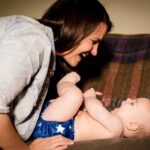Back in 2009, I embarked upon a ‘365’ challenge in which I took one photograph every day for a year. I started the year out with a simple bridge camera and ended up with a DSLR. I learnt an awful lot about discipline, acquired plenty of new skills and best all, made some wonderful friends.
Edinburgh had some awesome meet-up groups back then, with loads of people willing to teach and share their techniques. I found that it’s easy to learn one skill – and to keep doing that one thing very well can be tempting – but to really stretch yourself, you need to try new things or techniques.
For that reason I really enjoy reading about other photographers and looking at how they’ve produced their work. I can’t say I’ve ever been close to achieving their standard (obviously!) but I’ve really enjoyed trying to mimic their style or actually – just being inspired by them.
Today, I wanted to share one of my favourite photographers with you:
Top of my list of photographers has to be Lee Miller – although she battled with alcoholism and depression in later life (and was notably a pretty horrific parent) – her life surrounding Art and photography can be described as nothing but immense.
She started out as a fashion model in the twenties – notably as a Vogue cover girl – but soon became bored and switched to being on the other side of the camera. She moved from New York to Paris and convinced Man Ray to teach her more about photography, and befriended random artists you may of heard of such as Picasso and Max Ernst.
When the war broke out, she reinvented herself as a war correspondent – becoming the only female war correspondent in Europe. She eventually documened the liberation of Dachau and Buchenwald concentration camps. I think that for a woman of those times, to not run from war but to head towards the thick of it, was insane but brilliant at the same time.
Photography within war zones provides a means by which outsiders may be able to truly understand the atrocities. Obviously, the vast majority of people will never experience concentration camps – but without images it’s very difficult to even begin to imagine what they must have been like.

Lee Miller’s view through the camera was different from any other, in my opinion. I can’t help but be moved by her images and question what story they are telling or to want to question what was on her mind. I think that there’s a real risk sometimes that photographs of war can lead to a glorification of events – or a sense that it was all worthwhile, with human life being discarded. I’ve never felt that in Miller’s work – it’s engaging, provocative and if anything, sticks two fingers up at the world that told her to be anything but what she wanted.
Obviously, photography has moved a long way since the 1940’s – most notably, the absence of film in day to day life. Although I have the ability to develop my own stuff – it’s doesn’t fill me with joy and excitement. I am so glad for the development of technology and to be able to edit on screen rather than in the dark room. So what can I learn from Lee Miller?
A photograph obviously tells us about the subject of the image, but equally conveys the opinion of the photographer as an individual who frames the shot, choses how to edit – what to highlight/what to crop etc. Miller manages to achieve images that communicate so much both about the world and herself. If I’m to take anything from her work, I guess it’s a reminder to be real – to oneself and the world around.
I’ve recently been putting together our family photo album for 2015 – what’s missing is a lot of our day-to-day life. I often take the camera to special events or days out, but miss capturing the more mundane. This year, I aim to be more real and have a balance of both.

